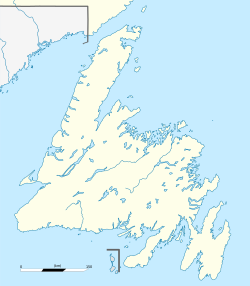Burnt Islands | |
|---|---|
Town | |
 Burnt Islands aerial view | |
Location of Burnt Islands in Newfoundland | |
| Coordinates: 47°35′50.40″N58°53′07.84″W / 47.5973333°N 58.8855111°W | |
| Country | Canada |
| Province | |
| Government | |
| • Mayor | Alfred Taylor [1] |
| Area | |
| • Land | 9.52 km2 (3.68 sq mi) |
| Population (2021) | |
• Total | 540 |
| • Density | 65.3/km2 (169/sq mi) |
| Time zone | UTC-3:30 (Newfoundland Time) |
| • Summer (DST) | UTC-2:30 (Newfoundland Daylight) |
| Area code | 709 |
| Highways | |
| Website | burntislandsnl |
| Colombier Islands Lighthouse | |
| Constructed | 1929 (fog alarm) |
| Foundation | concrete base |
| Construction | aluminium skeletal tower |
| Height | 11 m (36 ft) |
| Shape | quadrangular skeletal tower with balcony and lantern [3] [4] |
| Power source | solar power |
| Operator | Canadian Coast Guard |
| Fog signal | 1 blast every 30s. |
| First lit | 1971 (current tower) |
| Focal height | 18 m (59 ft) |
| Range | 15 nmi (28 km; 17 mi) |
| Characteristic | Fl W 5s |
Burnt Islands is a small coastal community found in God Bay on the southwest coast of Newfoundland, Canada.
